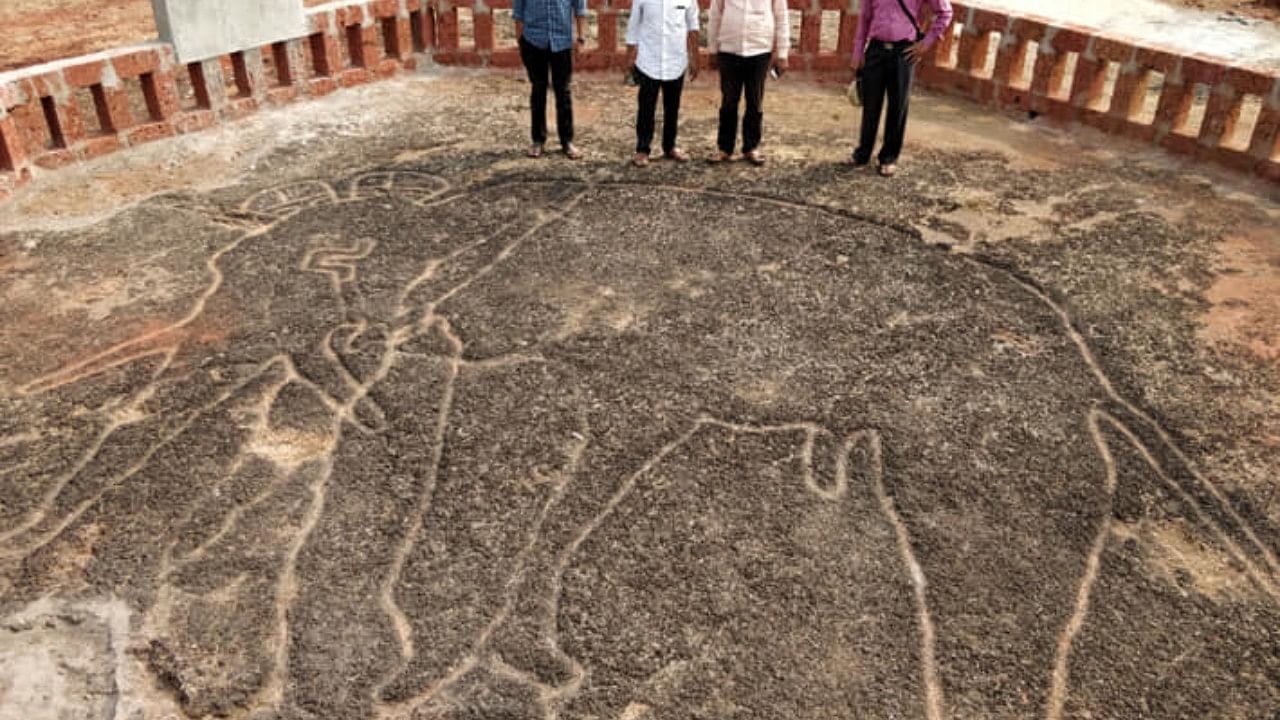
In what comes as great news, the geoglyphs of the coastal Konkan region of Maharashtra has made it to the tentative list of UNESCO World Heritage Sites.
Geoglyphs are rock art produced on the surface of earth either by positioning rocks, rock fragments or by reduction technique, that is, carving out or removing part of a rock surface to form a design - and, perhaps the most famous geoglyphs are the Nazca lines in Peru.
Last week, Lazare Eloundou Assomo, Director of the UNESCO World Heritage Centre has written to Vishal V Sharma, Ambassador, Permanent Delegate of India to UNESCO, confirming the inclusion of the Konkan geoglyphs in the tentative list of World Heritage Sites.
“Yes, the geoglyphs of the Konkan region has made it to the tentative list. Last year, we had submitted the bid and this year we had made it. We have done the needful to protect these sites,” said Tejas Garge, Director, Directorate of Archaeology and Museums, Government of Maharashtra.
“Most of the geoglyphs from this region are mostly live size figures of animals and have been executed in carved outlines. The carvings are not deeper than 5 cm and the grooves are 3-4 cm wide. Most of the geoglyphs in Ratnagiri appear to be made by pecking technique by hammer stone,” said Dr Garge, the chief archaeologist of the Maharashtra government.
The geoglyphs/petroglyphs of the Konkan, Goa, and Southern Karnataka are unique and is the most remarkable open-air ensemble of prehistoric human expression of rock art.
Geoglyphs are unique typologies in human creative art in terms of size and scale. Evidence of the largest span of time, Geoglyphs exist worldwide and are important cultural expressions since the Palaeolithic times.
While most common rock art in India is in the form of rock paintings, rock etchings, cup marks and ring marks, the large concentration of geoglyphs on the laterite plateaus (Sada) in the Konkan is unique and most remarkable open-air ensembles of prehistoric human expression since 30,000 years ago.
Known as Aparanta, the Konkan region was a culturally vibrant land since the early historical period.
More than 600 figures arranged in the clusters are depicted inKasheli, RundhyeTali, DevacheGothane, Barsu, Devi Hasol, Jambharun, Ukshi and Kudopi in southern Maharashtra and Pansaymol in Goa, are the most comprehensive, well-preserved and artistically distinct Geoglyphs evidencing a cultural legacy of 12,000 years.
The Konkan region along the Arabian Sea witnessed flourishing trading activities complex maritime and inland trade linkages. It was connected to the Western Ghats through a major communication corridor and the landscape was dotted with numerous forts, to protect the series of ports that were the critical linkage between the subcontinental and foreign shores. This made the Konkon region the most sought after political-geography, contested by the Mauryas, Satvahanas, Shilaharas, Rashtrakutas, Kalchuris, Chalukyas, Vijaynagaras, Deccan Sultanates, Mughals, Marathas, also by the colonial powers such as Portuguese, Dutch and later the British alike.
Check out the latest videos from DH: